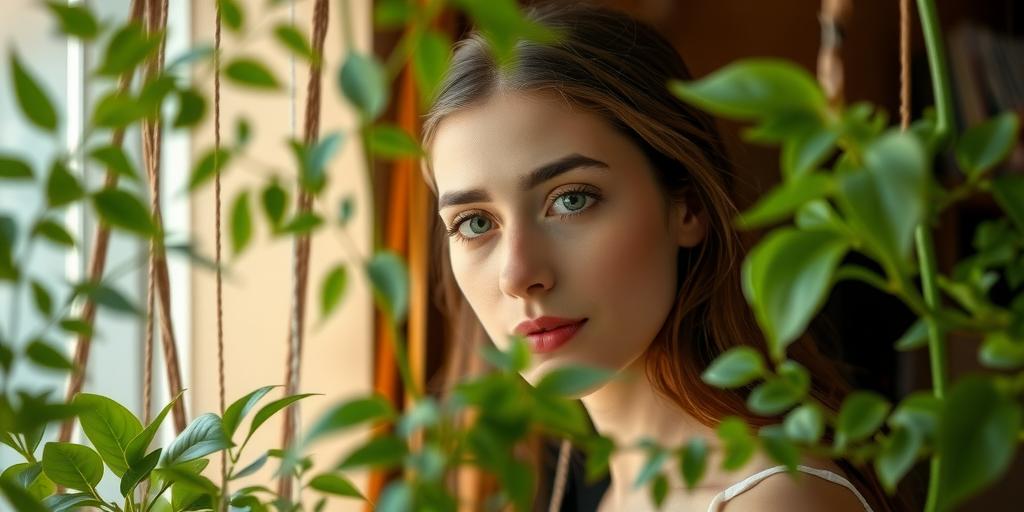
Easy Care Hanging Plants That Thrive in Low Light: Top Picks for 2025
Discover the best easy-care hanging plants that thrive in low light! Perfect for beginners and busy plant lovers, these low-maintenance beauties will brighten up any dim corner.
Introduction
Did you know that some of the most stunning hanging plants actually prefer low-light conditions? If you’ve been hesitant to add greenery to your home because of poor lighting, worry no more! Whether you’re a busy plant parent or a beginner, these easy-care hanging plants will thrive with minimal effort. From lush trailing vines to air-purifying wonders, we’ve rounded up the best low-light hanging plants to transform your space effortlessly.
Why Choose Hanging Plants for Low Light?
Hanging plants are a fantastic way to bring life into small spaces without sacrificing precious floor space. If you live in an apartment or have limited room to work with, suspending plants from the ceiling or placing them on high shelves keeps your greenery out of the way while still adding beauty.
Another great reason to opt for hanging plants is their ability to thrive in low-light conditions. Many houseplants struggle in dimly lit rooms, but certain varieties actually prefer indirect or filtered light—making them perfect for north-facing windows or rooms with few windows.
Beyond practicality, hanging plants add visual interest to otherwise dull corners. A trailing vine or cascading foliage can soften harsh lines in a room, creating a more inviting atmosphere. Plus, many low-light hanging plants are incredibly low-maintenance, making them ideal for beginners or those who don’t have much time for plant care.
Top Easy-Care Hanging Plants for Low Light
If you’re looking for the best low-light hanging plants, these five varieties are nearly foolproof:
Pothos (Epipremnum aureum)
Pothos is one of the most resilient houseplants out there. It thrives in low to moderate light and can even tolerate fluorescent lighting, making it perfect for offices. Its trailing vines grow quickly, and it’s forgiving if you forget to water it occasionally.
Spider Plant (Chlorophytum comosum)
Spider plants are incredibly adaptable and can handle a range of lighting conditions, including low light. They’re also excellent air purifiers and produce “pups” (baby plantlets) that you can propagate to grow more plants.
Philodendron Heartleaf (Philodendron hederaceum)
This fast-growing vine is another great option for low-light spaces. Its heart-shaped leaves add a lush, tropical feel, and it’s very forgiving if you neglect it for a while. Just give it a trim if it gets too leggy.
Peperomia (Peperomia spp.)
Peperomias come in many varieties, some with striking variegated leaves. They stay compact, making them ideal for small hanging planters. They prefer bright, indirect light but can adapt to lower light levels.
ZZ Plant (Zamioculcas zamiifolia)
The ZZ plant is practically indestructible. It thrives in dim light and can go weeks without water, making it perfect for forgetful plant owners. Its glossy leaves add a modern touch to any space.
Care Tips for Low-Light Hanging Plants
Even though these plants are low-maintenance, they still need proper care to thrive. Here’s how to keep them healthy:
Watering
Overwatering is the biggest killer of houseplants, especially in low-light conditions where soil takes longer to dry. Always check the soil before watering—stick your finger in about an inch deep. If it feels dry, it’s time to water. If it’s still moist, wait a few more days.
Humidity
Many tropical hanging plants, like pothos and philodendrons, appreciate a bit of extra humidity. If your home is dry, mist them occasionally or place them near a humidifier. Bathrooms with showers can also provide a naturally humid environment.
Fertilizing
During the growing season (spring and summer), feed your plants with a diluted houseplant fertilizer every 4-6 weeks. In fall and winter, most plants go dormant, so you can reduce or stop fertilizing.
Pruning
If your plant starts looking leggy (long stems with sparse leaves), give it a trim. Cutting back the vines encourages bushier growth. You can also propagate the cuttings in water to grow new plants!
Best Places to Hang Low-Light Plants
Not sure where to place your hanging plants? Here are some great spots:
Bathrooms with Minimal Natural Light
Many low-light plants love the humidity from showers, making bathrooms an excellent location. Just make sure there’s at least some indirect light—complete darkness won’t work for any plant.
Dark Corners of Living Rooms or Bedrooms
A trailing pothos or spider plant can brighten up a dim corner, adding life to an otherwise forgotten space.
Office Spaces with Fluorescent Lighting
If your workspace lacks windows, plants like ZZ plants or pothos can still thrive under artificial lighting.
Shelves or Ceilings Away from Direct Sunlight
Hanging plants near windows with sheer curtains or in spots where sunlight is filtered prevents scorching while still giving them enough light to grow.
Common Mistakes to Avoid
Even with easy-care plants, a few missteps can lead to problems. Here’s what to watch out for:
Overwatering
Low-light plants dry out slower than those in bright light. Always check the soil before watering to avoid root rot.
Placing in Complete Darkness
While these plants tolerate low light, they still need some indirect light to survive. A completely dark closet or basement won’t work.
Ignoring Pests
Spider mites, mealybugs, and fungus gnats can still attack low-light plants. Inspect leaves occasionally and treat infestations early with insecticidal soap or neem oil.
Using Heavy Pots
Hanging planters should be lightweight to avoid straining hooks or shelves. Opt for plastic, macramé, or fiberglass instead of heavy ceramic pots.
By choosing the right plants and following these care tips, you can enjoy lush, healthy greenery even in the darkest corners of your home!
Conclusion
Adding hanging plants to your low-light spaces doesn’t have to be complicated! With the right choices—like Pothos, Spider Plants, and Philodendrons—you can enjoy lush greenery without the hassle. Remember, the key is balance: moderate watering, occasional feeding, and just enough light to keep them happy. Ready to transform your space? Pick your favorite low-light hanging plant and let nature do the rest!
